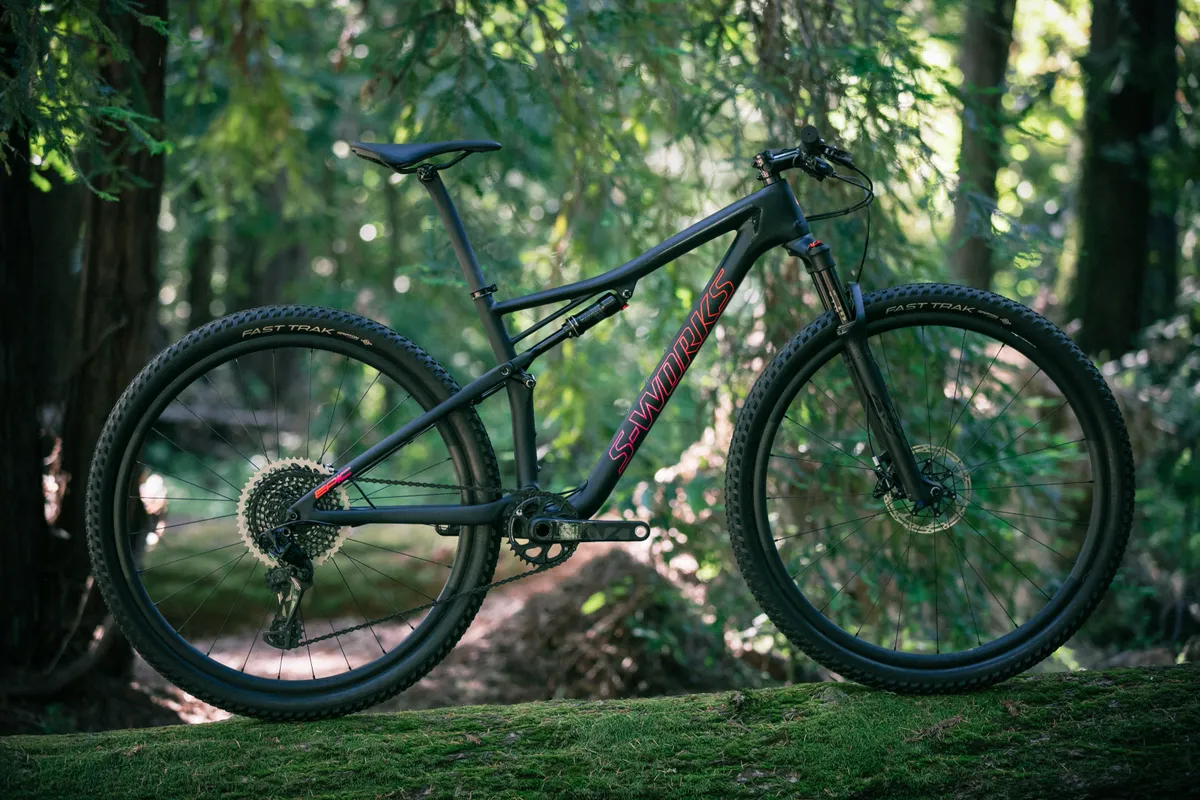It can't be easy trying to overhaul a bike as successful as the Specialized Epic. With a staggering 96 major victories to its name spanning everything from the mud, root and rock at World Cup and World Championships, to the dusty plains and extreme heat of the Cape Epic, it's certainly proven itself over the years.
Still, it's something the guys at Specialized were tasked with for 2018. So what have the Californian design team done with this well-proven racer?
Specialized Epic spec overview
- Frame: 12m FACT carbon with 100mm of travel
- Fork: (inc travel) RockShox SID WC with Brain and 100mm of travel
- Shock: RockShox Specialized Micro Brain with Autosag
- Drivetrain: SRAM 1x12 XX1 Eagle
- Wheelset: Roval Control Carbon 29 rims on Specialized disc hubs
- Tyres: Specialized Fast Trak GRIPTON 2.3in (f), Specialized Fast Trak GRIPTON 2.1in (r)
- Brakes: SRAM Level Ultimate
- Bar/stem: Specialized S-Works carbon mini-rise, 720mm/Specialized S-Works SL alloy, 90mm
- Seatpost/saddle: Specialized S-Works FACT Carbon,30.9mm
- Weight: 9.6kg (without pedals, size large)
- Stack: 611mm (L)
- Reach: 456mm
- Wheelbase: 1,152mm
- Head angle: 69.5 degrees
- Seat angle: 74.75 degrees
Lighter, smarter, faster
When Specialized set out to re-work the Epic it had three goals: make it lighter, make it smarter and make it faster.
Specialized claims that it has in fact made the frame a staggering 525g lighter on the Pro, Expert and Comp models, while there's a 345g reduction on the top-tier S-Works offering.
Despite the reduction in frame weight, Specialized claims to have maintained the stiffness in all the right places. One way that weight was saved was with the removal of the chainstay pivot.
Now, inbuilt rear triangle flex between the chainstay and seatstay provide the small amount (about 3mm) of movement required to help deliver the Epic's 100mm of travel — upped from 95mm last year. Rear axle spacing moves to 148x12mm as well to help boost stiffness.
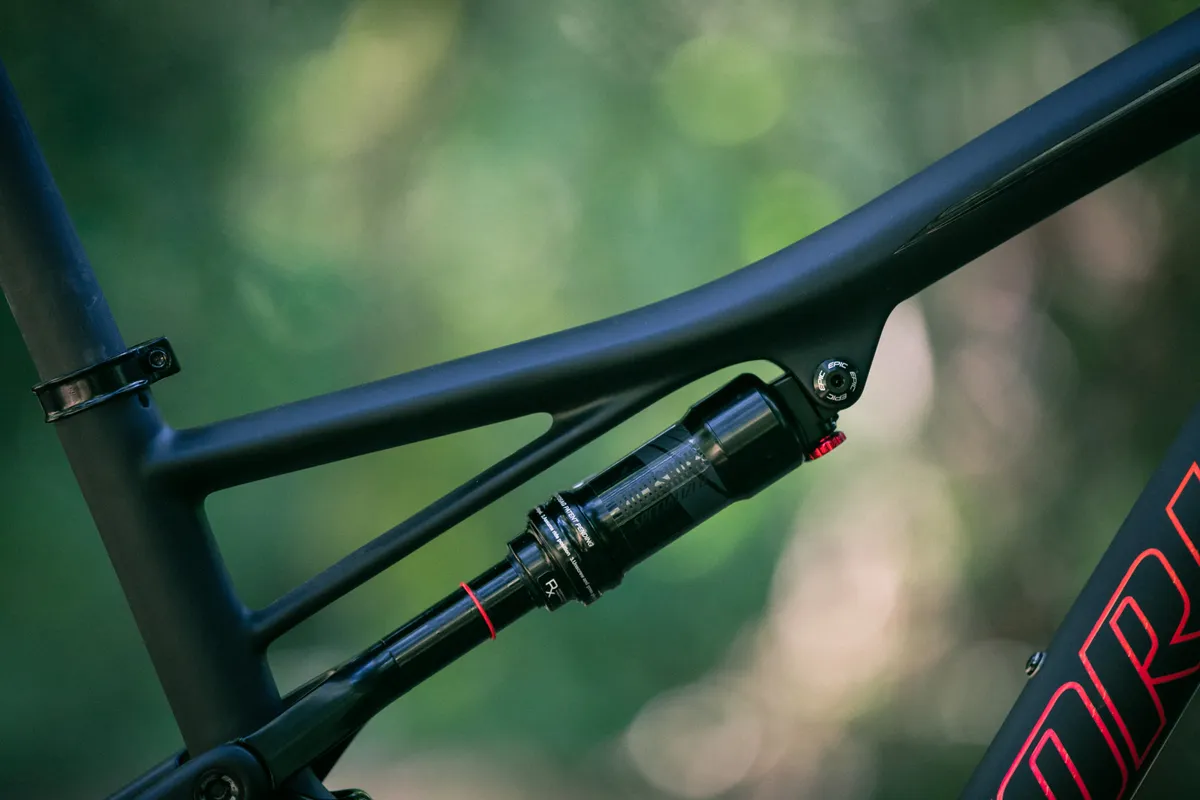
OK, making a bike lighter and faster makes total sense, but smarter? Those of you familiar with the Epic, especially in its full suspension guise, will have heard of Specialized's Brain technology. Take a look at the non-drive side of the bike, down by the rear axle and you'll spot a remote reservoir, attached via a hose to the rear shock. This nifty little Brain unit houses an inertia valve (a sprung loaded brass mass on a shaft that moves to open and close a port), which dictates how and when the shock compresses. Under pedalling, or when the rider is moving around on the bike, the Brain remains locked out to provide the most efficient platform possible with no movement in the shock, which helps to create an incredibly stable chassis for climbing and sprinting. But when the rear wheel hits a bump, the inertia valve is forced open, allowing oil to flow and the shock to compress.
It may seem like a complex way of doing things, but it does mean there's no need to worry about using a remote to adjust your shock and it's something many racers have appreciated for a long time now. It, quite simply, does the thinking for you.
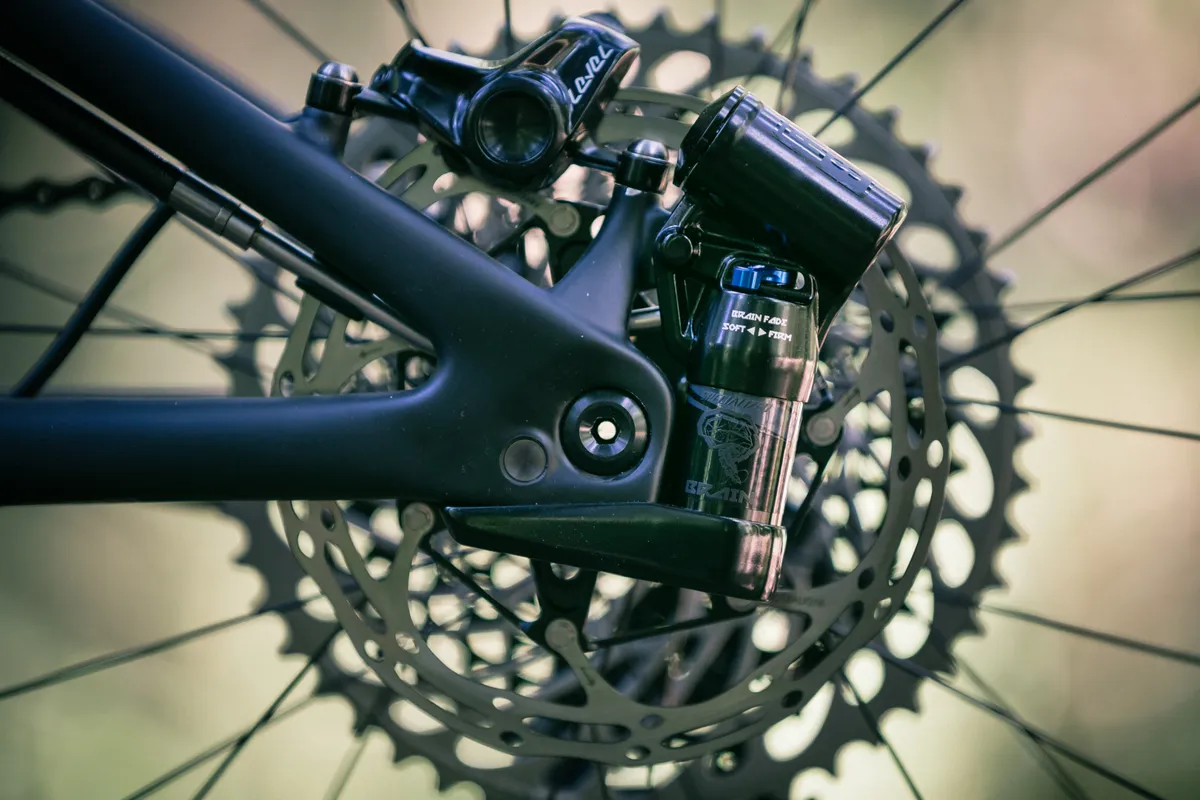
For the all-new Epic, Specialized wanted to improve how the Brain worked, not only making the bike efficient and fast to get up to speed, but improve upon how it actually maintains that speed and momentum once the trail starts getting a bit dicey. To do this, Specialized moved the Brain reservoir closer to the rear wheel axle (it previously sat inside the chainstay/seatstay junction). The closer these two are together, the more accurate and sensitive the inertia valve can be, improving overall suspension behaviour. Oil flow was also critical. "A lot of time was spent on just damping hysteresis. You can see that the fluid actually flows through this clevis — the clevis is actually part of the shock absorber — and has a straight shot into the hose and all the way to that reservoir. All the way through that reservoir, attention is paid to how that fluid flows. It's going in a laminar flow direction, not turbulent, that's the whole key and improves damping hysteresis. What that just means is, on high speed, choppy terrain, it improves traction," explains Mike McAndrews, quite literally the brains behind the Brain technology at Specialized.
The Brain also moves away from using an IFP (Independent Floating Piston) to a bladder design.
The Brain 'feel' can be altered via the blue, indexed dial at the bottom of the Brain reservoir and adjusts how much force is required to get the shock moving. The position clicks range from soft to firm.
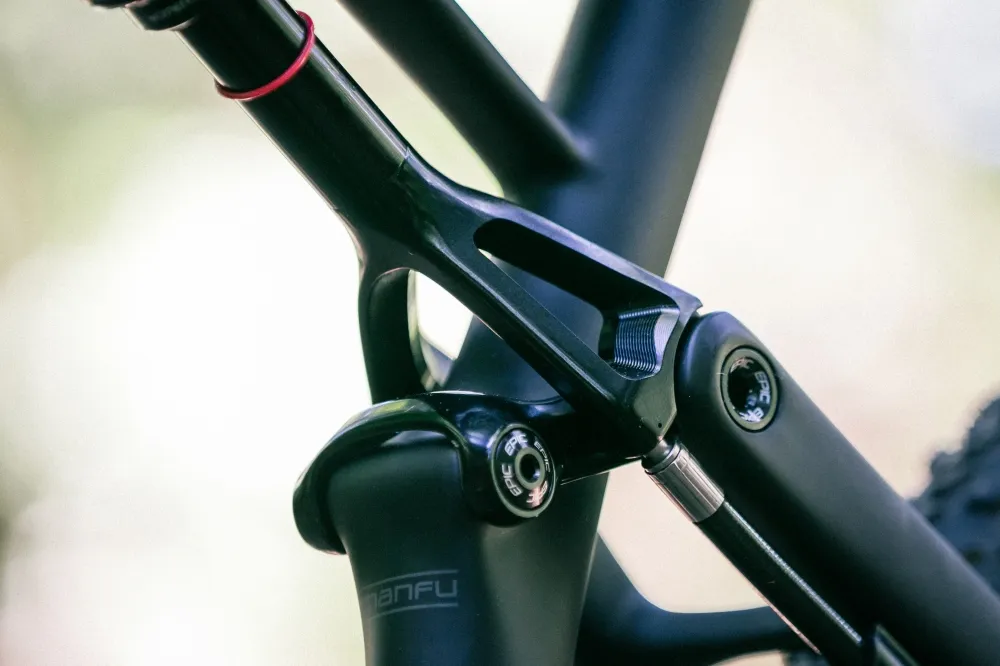
Both the RockShox shock and fork get Specialized's proprietary 'Spike Valve'. "It's a regressive valving that we use in both the fork and shock," says Mike. He continues, "We're producing a flat compression curve which is really ideal for these light weight bicycles." For easy shock set up, just like the rest of its full suspension line up, all Epics get Specialized's Autosag system.Moving back to the full, FACT 12m carbon frame once again, it's worth noting that the Epic's geometry has changed significantly too. With the nature of cross-country tracks becoming technically more demanding, Specialized felt it was time to update its race machine's handling to reflect these changes in the sport.
Across all sizes (small to extra-large), the reach has increased by 10mm while the head angle gets slackened off to 69.5 degrees. There's also routing for an internally cabled dropper post — something we're likely to see more of as the cross-country season progresses.
In case you wondered, the seat tube diameter has increased to 30.9mm to ensure its open to more dropper post options. The chainstay has been reduced in length ever so slightly too, and now measures in at 438mm.
Keeping it proprietary
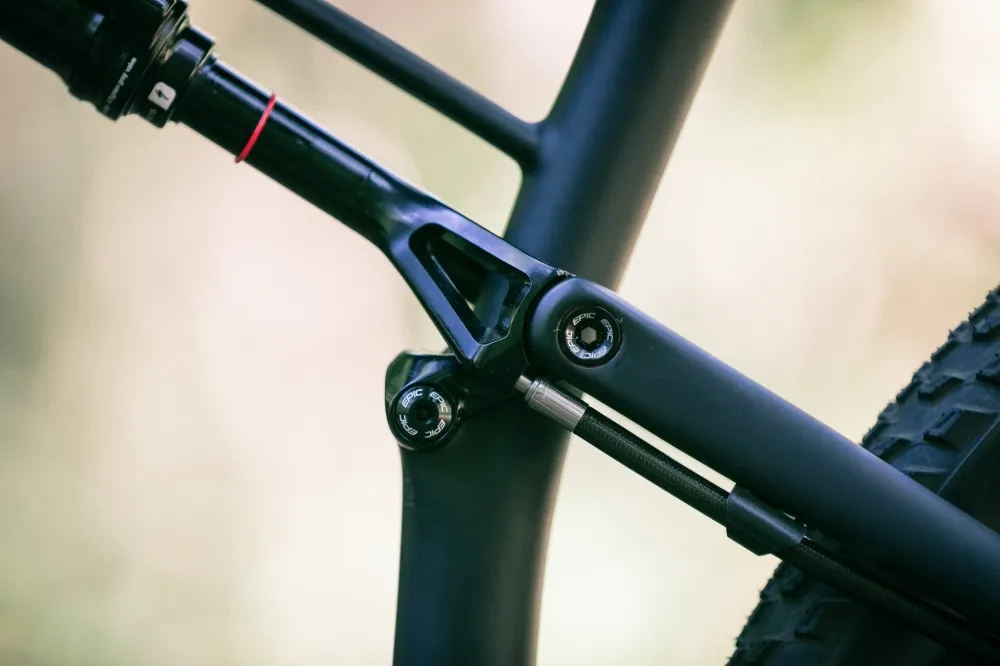
Bolted to the front of the S-Works Epic is the RockShox SID WC, which, just like the rear shock, also delivers 100mm of Brain controlled travel (and features 'Brain Fade' adjustment). While that sounds interesting enough on its own, Specialized, like a number of other manufacturers of late, was keen to go the extra mile and do something a little different with the fork offset in a bid to boost the Epic's handling capabilities. Coupled with the extended frame reach, Specialized also shortened the SID's offset by a significant 9mm, taking it from the standard 51 to 42mm. The shorter, custom offset helps improve stability even more and arguably should reduce twitchiness through turns. A slightly wider front Fast Trak tyre (2.3in rather than 2.2in used in 2017) further helps with the Epic's connection to the trail when things do get rowdy.
Interestingly, Specialized will be introducing the Gripton rubber compound to the MTB tyre line-up for 2018. It's been over on the road side for a while now, but it's a first for us dirt lovers. The rear Fast Trak tyre is skinny at 2.1in on the S-Works Epic though.
Just like Mondraker did a few years back with its Forward Geometry concept, the extra length added to the frame to increase the reach needed to be offset by using a stem 10mm shorter to maintain bar position. In this case, my large was sporting a 90mm stem coupled with a 720mm bar and both are Specialized own brand alloy numbers.
My S-Works test sled came shod with SRAM's latest 12-speed XX1 Eagle gearing and Level Ultimate brakes.
Specialized's in-house brand, Roval, takes care of the Epic's wheels. In this case the rims are the lightweight Control SL Carbon variety and sport an internal measurement of 25mm internal width to help increase tyre volume and support.
Initial ride impressions
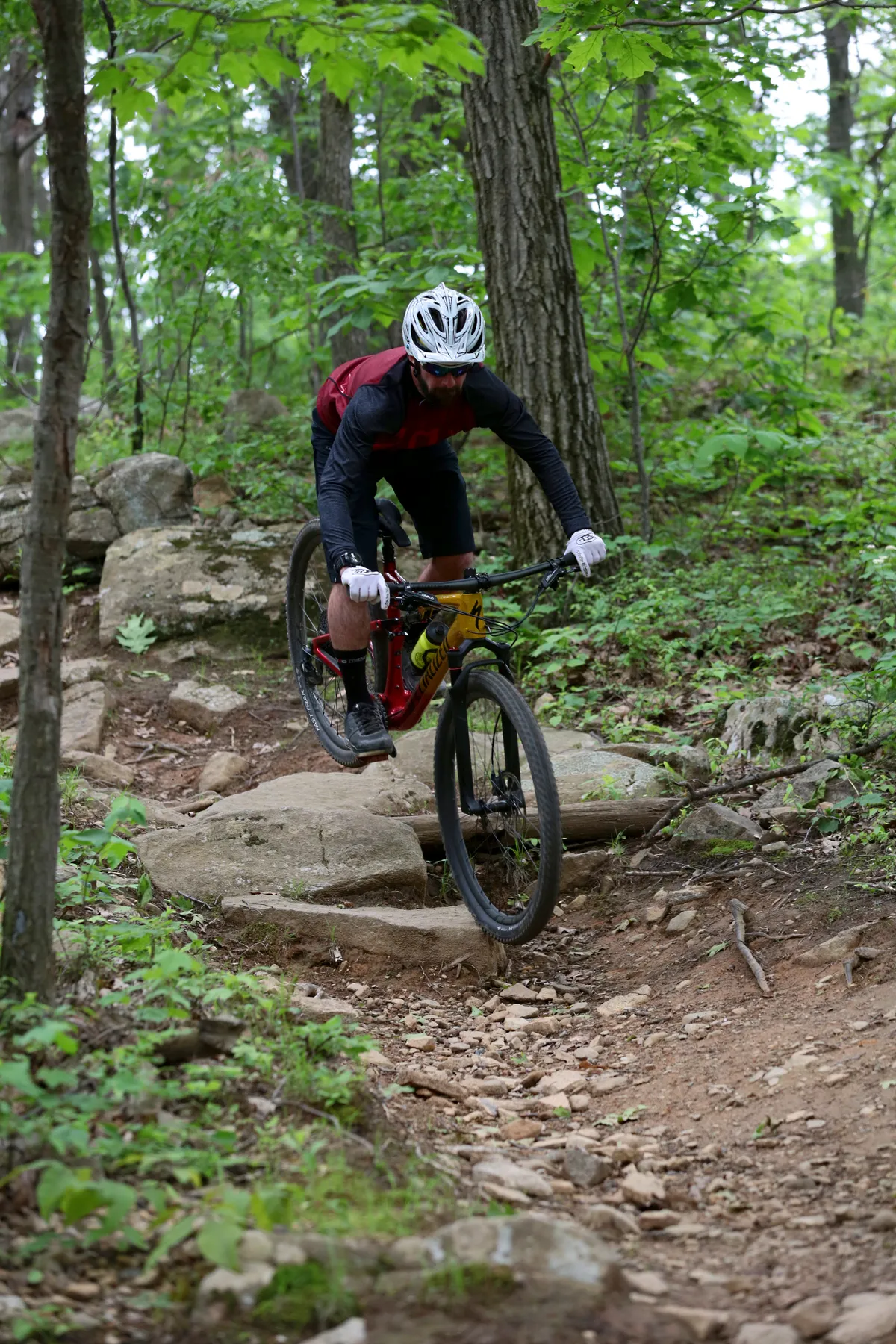
As ever on these launches, my time aboard the Epic was extremely limited on trails I was unfamiliar, so I'll do a full review later this year once I've spent some proper time on the bike. That said, a good couple of rides did give me some idea as to how this race whippet behaves in the dirt.
For those who've not been, Mountain Creek, New Jersey — Specialized's choice of destination to launch the new Epic — offers technical, rocky cross-country miles as well as it's more famed jump riddled bike park and downhill trails.
The climb to the top of the hill where the tricky XC loop began wasn't overly steep, but did have a couple of short, sharp gradients where I had to get out of the saddle and really claw at the pedals.
It's clear that the Epic has stepped up a level in terms of what it's capable of
It's here that I noticed just how responsive and punchy the Epic feels when you do wind the power on. The sheer lack of bulk, that taut frame, the light wheels and the efficient suspension system means it doesn't take much to get the Epic up to speed, even when pointed uphill.
I began with the Brain on both the fork and shock in their firmest settings and as a result, the suspension remained totally settled. It was only when riding up and over stepped rock slabs where it would come to life. When the rear suspension does get moving, you can still feel a slight clunk through the frame as the Brain wakes up.
Initially it's an odd feeling but you do slowly get accustomed to it over time. That's not to say it's on every single hit, but it's still hard to ignore, early on at least. Thankfully in the softer modes this knock or clunk is far less pronounced and almost entirely unnoticeable when you do reach the softer end of the Brain adjustment.
As the trail levelled out and speeds began to rise, the awkward rock sections interspersed with slick dirt meant line choice was critical to keep the minimally tread Fast Trak tyres biting.
To ensure I was making the most of the rear suspension on offer, I toggled the Brain to the second-from-softest position where efficiency and compliance seemed well-balanced and overall felt like a good choice for the sort of technical terrain I was riding. Get on the gas between boulders and the Epic will pick up rapidly as you hammer the pedals, but as soon as the trail gets rowdy there's enough forgiveness in the front and rear to let you confidently attack sections that other XC bikes may have felt too fragile for in the past.
Up front I ended up leaving the fork in the softest mode, where I never felt like its small amount of movement under pedalling ever held me back.
It's clear that the Epic has stepped up a level in terms of what it's capable of. Through the faster rock strewn singletrack it remained stable and confident, unafraid of being thrown into a rock garden at pace. Muscle it onto the line you want and it'll reward you with speed. Through slower, more nadgery sections (of which there are quite a few in Mountain Creek) it never once felt perched or twitchy.
I did manage a couple of laps with a shorter 75mm stem and dropper post, where it's XC intentions remain clear, though it quickly starts to stray into trail bike territory. In this guise it's the puncture prone lightweight tyres that are the only thing really holding it back. Stick on something with a little more protection and this thing would be hilariously wild.
But just how long will it be before it swallows up the (slightly) longer travel Camber? Only time will tell.
Range and pricing at a glance
- S-Works Epic XX1 Eagle: £8,500 / $8,350 / AU$TBC
- S-Works Epic Shimano Di2: £N/A/ $10,100 / AU$TBC
- S-Works Epic: £8,500 / $7,500 / AU$TBC
- Epic Pro: £N/A / $6,500 / AU$TBC
- Epic Expert: £4,800 / $5,000 / AU$TBC
- Epic Comp Carbon: £3,500 / $3,800 / AU$TBC
- Epic Women's Comp Carbon: £3,500 / $3,800 / AU$TBC
- Epic Comp: £N/A / $2,800 / AU$TBC
- Epic Women's Comp: £N/A /$2,800 / AU$TBC
- S-Works Epic Carbon LTD frame: £N/A /$3,500 / AU$TBC
Specialized Epic early verdict
Specialized has bolstered the Epic's capabilities, adding stability where it counts without dulling its handling. It's still seriously efficient, but not afraid of getting rowdy when it counts.
